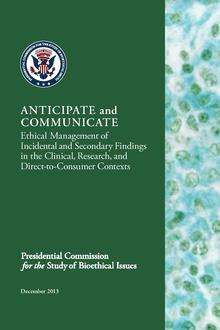Incidental medical findings
Incidental findings are previously undiagnosed medical or psychiatric conditions that are discovered unintentionally and are unrelated to the current medical or psychiatric condition which is being treated or tests being performed. Incidental findings may be uncovered in a variety of settings such as in test subjects during medical research[1] during the course of an autopsy[2] or during genetic testing etc.[3]
Ethical issues

The ethical issues around responding to incidental findings are complex.
Incidentalomas
An incidentaloma is a tumor found by coincidence which is often benign and does not cause any clinically significant symptoms, however a small yet significant percentage do turn out to be malignant. Incidentaloma are common with up to 7% of all patients over 60 may harbor a benign growth, often of the adrenal gland, which is detected when diagnostic imaging is used for the analysis of unrelated symptoms.
With the increase of "whole-body CT scanning" as part of health screening programs, the chance of finding incidentalomas is expected to increase. 37% of patients receiving whole-body CT scan may have abnormal findings that need further evaluation.[5]
In neuroimaging
Incidental findings in neuroimaging are common, with the prevalence of neoplastic incidental brain findings increasing with age. [6] Even in healthy subects acting as controls in research incidental findings are not rare.[7]
Pituitary adenomas
Pituitary adenomas are tumors that occur in the pituitary gland, and account for about 15% of intracranial neoplasms. They often remain undiagnosed, and are often an incidental finding during autopsy. Microadenomas (<10mm) have an estimated prevalence of 16.7% (14.4% in autopsy studies and 22.5% in radiologic studies).[8][9]
References
- ^ S.M. Wolf, J. Paradise, and C. Caga-anan:The Law of Incidental Findings in Human Subjects Research, J Law, Med Ethics. 2008 Summer Volume 36,(2):361–383 [1]
- ^ Light TD, Royer NA, Zabell J,et al. Autopsy after traumatic death--a shifting paradigm. J Surg Res. 2011 May 1;167(1):121-4. Epub 2009 Aug 7. PMID 20031159
- ^ Clayton EW. Incidental findings in genetics research using archived DNA. J Law Med Ethics. 2008 Summer;36(2):286-91, 212. PMID 18547196
- ^ Couzin-Frankel, Jennifer (2013). "President's Bioethics Panel Weighs in on How U.S. Should Handle Incidental Findings". news.sciencemag.org. Retrieved 13 December 2013.
- ^ Furtado CD, Aguirre DA, Sirlin CB; et al. (2005). "Whole-body CT screening: spectrum of findings and recommendations in 1192 patients". Radiology. 237 (2): 385–94. doi:10.1148/radiol.2372041741. PMID 16170016.
{{cite journal}}: Explicit use of et al. in:|author=(help)CS1 maint: multiple names: authors list (link) - ^ H, Ladd SC, Warlow C, Wardlaw JM, et al. Incidental findings on brain magnetic resonance imaging: systematic review and meta-analysis. BMJ. 2009 Aug 17;339:b3016. doi:10.1136/bmj.b3016. PMID 19687093
- ^ Cramer SC, Wu J, Hanson JA, et al. A system for addressing incidental findings in neuroimaging research. Neuroimage. 2011 Apr 1;55(3):1020-3. Epub 2011 Jan 8. PMID 21224007
- ^ Ezzat S, Asa SL, Couldwell WT, Barr CE, Dodge WE, Vance ML, McCutcheon IE. (August 2004). "The prevalence of pituitary adenomas: a systematic review". Cancer. 101 (3): 613–9. doi:10.1002/cncr.20412. PMID 15274075.
{{cite journal}}:|access-date=requires|url=(help)CS1 maint: multiple names: authors list (link) - ^ Asa SL (August 2008). "Practical pituitary pathology: what does the pathologist need to know?". Arch. Pathol. Lab. Med. 132 (8): 1231–40. doi:10.1043/1543-2165(2008)132[1231:PPPWDT]2.0.CO;2. PMID 18684022. Retrieved 2008-09-03. [dead link]
